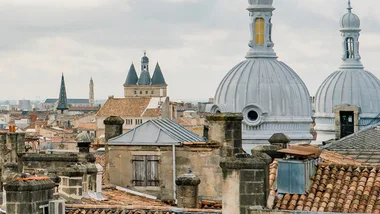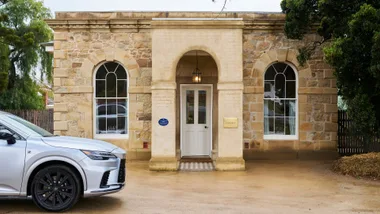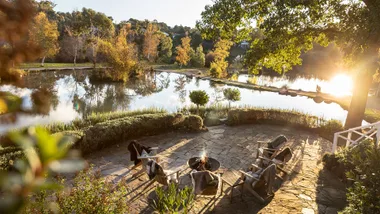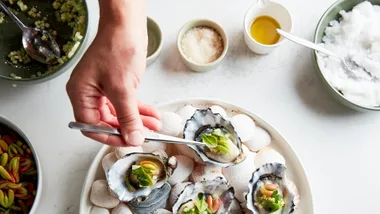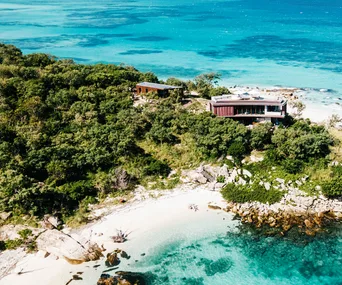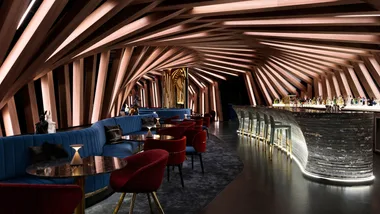The chileatole arrived in a thick-rimmed, cacao-brown pottery bowl. It was jungle green, as vivid as leaves in a Frida Kahlo oil painting. A vegetable soup, I guessed, having been given no menu to cross-reference. I lifted it to my lips and sipped and my eyes jolted wide, almost comically, like a cartoon mouse catching sight of a cat. This was no ordinary soup.
It was at once savoury and herbaceous, with flavours as deep as the most cavernous Yucatecan cenote. It hit me with a splash of tastes that seemed to run up and down my tongue in a millisecond, pinging every sense. It felt as fresh as spring and as ancient as the Aztecs.
This exquisite opening stanza at Quintonil – superstar chef Jorge Vallejo’s 12-year-old multi-course fine-dining restaurant in the affluent district of Polanco – symbolises one vision I will always carry of Mexico City gastronomy: complexity in simplicity. It was made only of corn masa, a potion of local herbs including hypnotic epazote, which has notes of petrol, anise and even putty, electrified with cuaresmeño – or jalapeño – chillies. Humble ingredients, to look at anyway. Yet it had so much flavour it felt like it could power the grid for the entire 150,000 hectares of this enormous metropolis. Mexican cuisine is about creating great depth and great complexity from the simplest of ingredients. This beautiful and bountiful green soup defined that maxim perfectly.
Mexico City – or CDMX (Ciudad de México) as it’s commonly known – is one of the most exciting food cities on earth, which should come as no surprise considering how many of the world’s great ingredients originate here. Chillies, corn, avocados, tomatoes, sweet potato, cacao, cinnamon and vanilla are all native to Central America. With building blocks like that it’s no wonder gastronomy is in people’s blood. Like most modern global cities, today you can find expressions of those ingredients in all price ranges, traditional and progressive. Run the gamut from refined dégustations like Quintonil and seafood-forward Contramar to street taquerias, and everything in between.
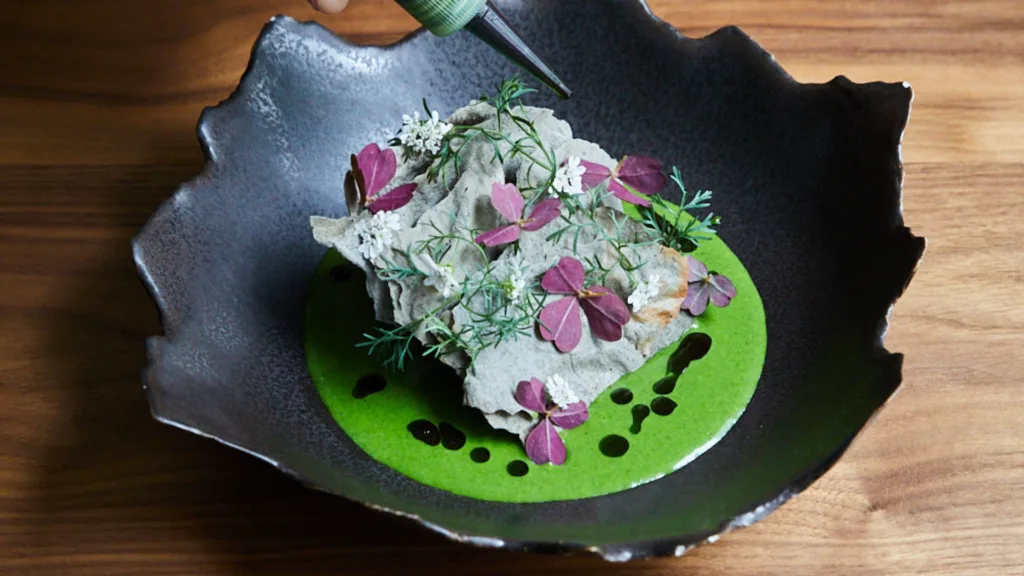
Your food radar should train itself first to tacos, of course, a historically working class food, thought to have originated as a quick bite for 18th-century silver miners. The classics are Taqueria Selene in Anzures, just north of Polanco, which is famous for its generously loaded al pastor, and Los Cocuyos on Calle Simon Bolivar in the centre of the city – a favourite of the late Anthony Bourdain – known for packing megaloads of meat into comparatively small tacos: tripe, tongue, longaniza sausage. The diminutive size is a feature not a bug; giving you the capacity to try many options. Calle Puebla in Roma Norte buzzes with primary-colour-daubed street stands hawking tacos, enchiladas and gorditas; pick the one with the most customers and you won’t go wrong. But don’t dismiss the sleeker, newer options either – Mexico is a country of contrasts and its modernity is just as much part of its handwriting as its history. Young capitalinos can be seen packing any of the branches of Taqueria Orinoco for its loose, late-night atmosphere and tacos de chicharron, crisp pork skin crowned with cilantro and tangy salsas, while the polished business crowd buy their rib eye and sirloin tacos from one of the upscale outposts El Califa.
Breakfast is taken very seriously in this part of the world. You could – and should – grab a street tamale at least once but a cultivated café experience is deeply entrenched in the city’s DNA. One crisp morning I walk the leafy streets of Polanco, filled with daintily dressed locals walking chihuahuas and poodles, to Eno, the café run by renowned local chef Enrique Olvera, for a sunshine-y bowl of chilaquiles verde, fried taco strips with a bright green chile salsa and crèma.
Quintonil’s Jorge Vallejo’s casual side project, Aúna Café, shares its neoclassical 19th-century building with a hip bike shop. The city’s cyclists are known to clock off a few dozen kilometres in the morning before piling in for coffee, pastries and freshly baked pan de masa madre – sourdough – baked with pancetta and cheese, or camote (sweet potato). Vallejo himself recommends Nico’s, which has been serving traditional Mexican dishes for 60 years. He orders huevos encamisados, a Yucatecan dish of eggs cooked in a tortilla with beans.
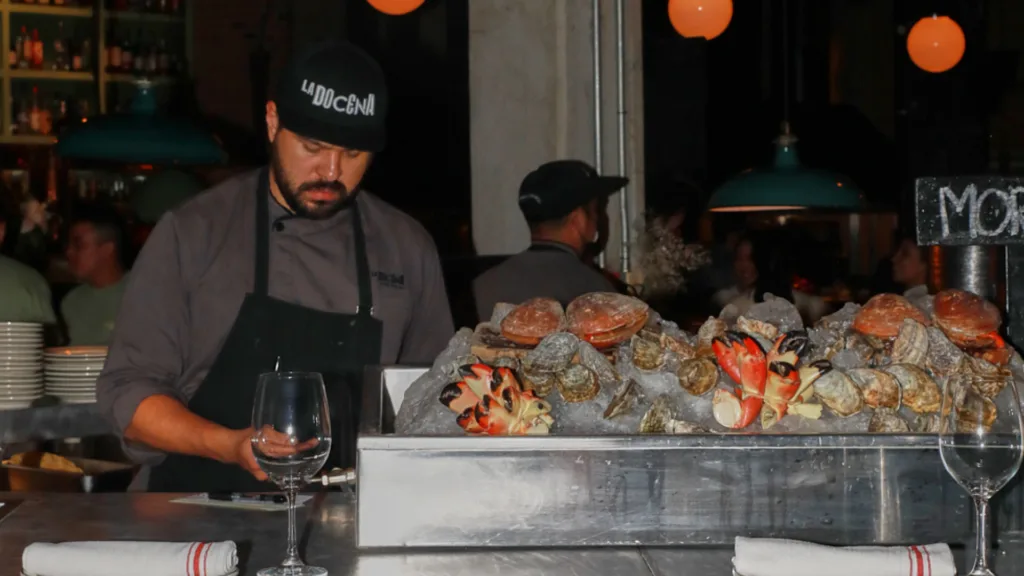
Then there is the bakery in the hip Roma Norte district that draws down-the-block crowds every weekend: Panadería Rosetta, the bakery belonging to Elena Reygadas, former World’s Best Female Chef, according to World’s 50 Best Restaurants. The only window I have to visit is a Saturday and with limited time, so when I arrive the lengthy lines force me to eat with my eyes rather than my mouth, but later I check in with Rebecca Yazbek from Nomad in Sydney and Melbourne, who’d visited with her family recently. “We lined up and we are not ‘line up’ kind of people, especially with three small children,” she reported. It was worth it. She swooned for the Rosca de Reyes, a ring-shaped New Year cake made from lemon, cumquats and almonds, but it was the rollo de guayaba – a guava and ricotta pastry – that floored her. “I can attest to this tasty combination,” she says, adding that sweet and softly textured guava should take more of a centre-stage role in baked goods everywhere. If you cannot or will not queue you can head round the corner to one of Reygadas’ other projects, Lardo, to eat yoghurt, berries and burrata chilaquiles. “If I was to live in Mexico it would have to be within walking distance of this place,” says Yazbek. “It’s truly what every traveller who eats is searching for.”
My final Mexico City food memory comes after a night of sweat-soaked howling at a Lucha Libre wrestling match. At first, it deglazes my mind from any belief that food here always needs to be complex. At La Docena, again in Roma Norte, chef Tomás Bermúdez brings out towers of fresh and largely unadulterated seafood: Sol Azul oysters from Baja California, thick tranches of raw tuna, crab claws and urchin, juiced up with tequila and tall glasses of Chardonnale, a beer-wine hybrid from Guadalajara microbrewery Tiny Bastards. This is food at its barest, its most pure. Simple ingredients speaking for themselves.
In Australia you’d eat it all with a squeeze of lemon. But here, we layer on one of three different hot sauces. That feisty Mexican flavour kick is never far away.
Tlecan: a tiny, transportive den paying homage to pre-Hispanic times.
Fifty Mils: a chic cocktail bar inside one of the most breathtaking buildings in Mexico City.
Cafe de Nadie: a red-hued vinyl bar that’s a favourite of both locals and out-of-towners.
Rayo: inside a landmark building in Mexico’s Roma Norte region with whimsical drinks.
Oropel: a buzzing after-work drinks spot serving 20 different styles of vermouth.
Five Mexico City bars to try

Where to stay in CDMX: Mexico City hotels
Campos Polanco
Located in what feels like the Beverly Hills of Mexico City, Campos Polanco houses 12 stunning residences inside a renovated, 1940s art deco building. The Campos Residence is one of the most special, featuring a spacious warm-toned living room, a plush king bed and a standalone bathtub that immediately invites guests to sink into. A welcome drink of mezcal, paired with squares of rich dark chocolate, only adds to this refined Mexico City experience.
Kimpton Virgilio
Another hot hotel in the sophisticated Palanco neighbourhood is Kimpton Virgillo, which opened its doors in February 2024. With a rooftop pool and bar and Pepe Mesa Espanola tapas restaurant below, Kimpton’s first new hotel is a boutique conduit to the Mexican City sweet life. Inside, you’ll find 48 guest rooms designed by Arquitectura de Interiores Studio with plush beds, colourful art and handmade tiles, all snatched to perfection.
Condesa DF
A French neoclassical hotel in the heart of Mexico City’s cocktail scene, designed by star aesthete India Mahdavi. Beyond the 40 guest rooms, the colosseum of cool brings travellers and locals together to eat and drink around a central patio. The location is another boon, If Polanco is the polished end of town, Condesa is its bohemian neighbour. Stay here for proximity to artsy, urban Mexico City atmosphere.
Casa Polanco
Make yourself at one in one of just 19 individually decorated rooms at quaint (but luxe) boutique hotel Casa Polanco. Each room comes with down comforters and Egyptian cotton sheets for weary out-of-towners to catch a full night’s rest after long days and nights traipsing the bustling streets of Polanco.
Four Seasons Hotel
Wherever you go, the Four Seasons Hotel is synonymous with home away from home luxury, and the Four Seasons Hotel in Mexico City is no different. Each rooms is furnished with bathrooms featuring separate bathtubs and showers, as well as designer toiletries and hair dryers. With private saunas and a full-service spa on standby, this is the ultimate comfort to retreat to after long days enjoying the sights.

